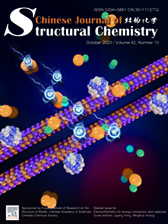
Cover Picture
Modulating metal-support interaction between Pt3Ni and unsaturated WOx to selectively regulate the ORR performance
Jinli Chen, Shouquan Feng, Tianqi Yu, Yongjin Zou, Huan Wen*, Shibin Yin* Submit a Manuscript
Modulating metal-support interaction between Pt3Ni and unsaturated WOx to selectively regulate the ORR performance
Jinli Chen, Shouquan Feng, Tianqi Yu, Yongjin Zou, Huan Wen*, Shibin Yin* Submit a Manuscript
Controllable decoration of Ni-MOF on TiO2: Understanding the role of coordination state on photoelectrochemical performance
Hongye Bai, Lihao Yu, Jinfu Xu, Xuliang Pang, Yajie Bai, Jianguo Cui*, Weiqiang Fan*
Chin. J. Struct. Chem., 2023, 42: 100096. DOI: 10.1016/j.cjsc.2023.100096
October 15, 2023
Photoelectrochemistry; TiO2; Ni-MOF; Coordination state; Water splitting
ABSTRACT
Decoration of metal-organic framework (MOF) has been considered as an effective route to improve the photoelectrochemical (PEC) performance of TiO2, but there is still a lack of understanding of the regulatory structure. Herein, Ni-MOF was rationally introduced by in-situ etching method, which helps for artificially regulating the coordination state of Ni sites. The photocurrent density (0.81 mA/cm2) and IPCE value (33.1%) of TiO2-MOF-2 are about twice higher than that of pristine TiO2 due to the rich unsaturated sites of Ni-MOF. Meanwhile, the saturated coordination has caused the decline of PEC performance because of the obvious steric hindrance. Therefore, this work presents an insight for the effect of coordination state on PEC activity especially in MOF system.







